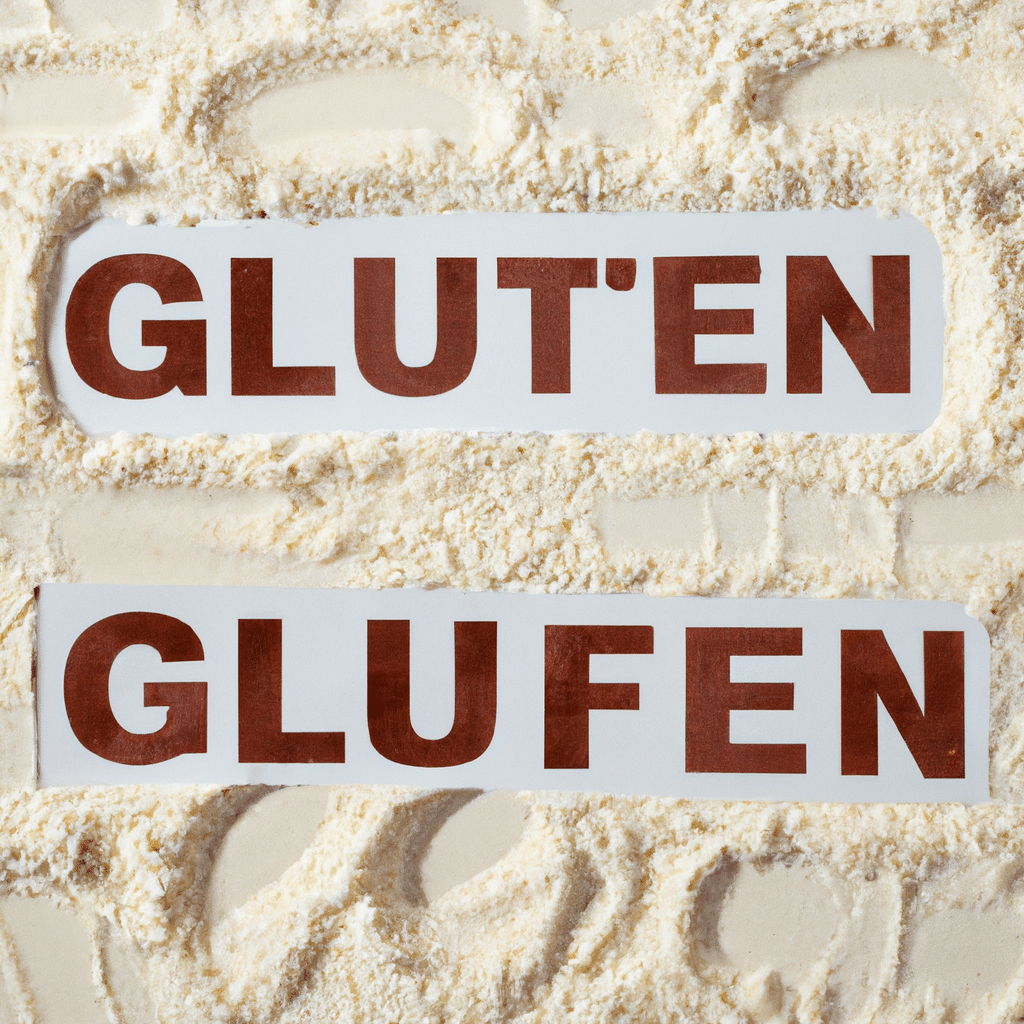When it comes to dietary restrictions, the terms ‘gluten-free’ and ‘gluten-friendly’ are often used interchangeably. However, there is a significant difference between these two concepts. Understanding this difference is crucial for individuals with gluten sensitivities or those following a gluten-free lifestyle. In this article, we will delve into the disparities between being gluten-free and gluten-friendly, shedding light on what these terms truly entail.
- 1. Understanding Gluten
- 1.1. What is gluten?
- 1.2. How does gluten affect the body?
- 1.3. Common sources of gluten
- 1.4. Health conditions related to gluten intolerance
- 1.5. The rise of gluten-free diets
- 2. Gluten-Free vs. Gluten-Friendly
- 2.1. Defining gluten-free
- 2.2. Exploring gluten-friendly options
- 2.3. Benefits of gluten-friendly diets
- 2.4. Potential drawbacks of gluten-friendly diets
- 2.5. Making informed choices
- 3. Navigating Food Labels
1. Understanding Gluten
Gluten is a protein found in wheat, barley, and rye. It is responsible for the elastic texture of dough and helps it rise during baking. However, for some individuals, gluten can cause adverse health effects. People with celiac disease have a severe gluten intolerance and must strictly avoid gluten-containing foods. Consuming gluten can trigger a range of symptoms such as digestive issues, fatigue, and skin problems in individuals with celiac disease. Additionally, some people may have a non-celiac gluten sensitivity, experiencing similar symptoms without having celiac disease. Understanding gluten and its effects is crucial for individuals seeking to make informed choices about their dietary needs.
1.1. What is gluten?
Gluten is a protein found in wheat, barley, and rye. It is responsible for the elasticity and structure of dough, giving bread its chewy texture. Gluten is made up of two components: gliadin and glutenin. When flour is mixed with water, these proteins combine to form gluten. For individuals with celiac disease or gluten sensitivity, consuming gluten can cause various health issues, including digestive problems, nutrient deficiencies, and inflammation. It is important for those who need to follow a gluten-free diet to carefully read food labels and avoid products that contain gluten.
1.2. How does gluten affect the body?
Gluten is a protein found in wheat, barley, and rye. When consumed by individuals with gluten-related disorders, such as celiac disease or gluten sensitivity, gluten can have a negative impact on the body. In people with celiac disease, consuming gluten triggers an immune response that damages the lining of the small intestine. This can lead to various symptoms, including abdominal pain, bloating, diarrhea, and nutrient deficiencies. Gluten sensitivity, on the other hand, does not involve an immune response but can still cause similar symptoms. Additionally, some research suggests that gluten might also contribute to inflammation and digestive issues in individuals without gluten-related disorders. It is important for those affected to follow a strict gluten-free diet to avoid these adverse effects and maintain good health.
1.3. Common sources of gluten
Understanding Gluten
Gluten is a protein found in grains such as wheat, barley, and rye. It is responsible for the elasticity and texture of dough in baked goods. While gluten is harmless for most people, it can cause adverse reactions in individuals with gluten-related disorders like celiac disease or gluten sensitivity.
Common Sources of Gluten
1. Wheat: This grain is the most common source of gluten and is found in various forms like bread, pasta, cereals, and baked goods.
2. Barley: Barley contains gluten and is commonly found in malted products, including beer, malt vinegar, and some breakfast cereals.
3. Rye: Rye is another grain that contains gluten. It is often found in bread, rye beer, and cereals.
4. Triticale: Triticale is a hybrid grain derived from wheat and rye, so it naturally contains gluten. It is commonly found in bread, pasta, and cereals.
5. Oats: While oats themselves are gluten-free, they are often cross-contaminated with gluten-containing grains during processing. Therefore, it is essential to choose certified gluten-free oats.
6. Processed Foods: Many processed foods, such as sauces, dressings, soups, and snack foods, may contain hidden sources of gluten. It is crucial to read labels carefully and look for gluten-free certifications.
7. Medications and Supplements: Some medications and supplements may contain gluten as fillers. It is essential for individuals with gluten-related disorders to check with their healthcare providers or pharmacists.
It is important for individuals with gluten-related disorders to carefully read labels and avoid consuming products that contain gluten. Following a gluten-free diet can help manage symptoms and improve overall health.
1.5. The rise of gluten-free diets
Gluten-free diets have become increasingly popular in recent years. With more people being diagnosed with gluten intolerances or sensitivities, the demand for gluten-free products has skyrocketed. Understanding what gluten is and why it is important to avoid it is crucial for those following a gluten-free diet.
Gluten is a protein found in wheat, barley, and rye. It provides elasticity to dough, helping it rise and maintain its shape. While gluten is harmless to most people, those with celiac disease or gluten sensitivities can experience adverse reactions when consuming gluten. Symptoms can range from mild discomfort to severe digestive issues.
As a result, many individuals are now opting for gluten-free diets to alleviate their symptoms and improve their overall health. Gluten-free products are readily available in most grocery stores and restaurants, making it easier for people to adhere to this dietary restriction.
It is important to note that gluten-free and gluten-friendly are not interchangeable terms. Gluten-free means that a product is completely free of gluten, ensuring it is safe for those with celiac disease or severe gluten sensitivities. On the other hand, gluten-friendly products may contain trace amounts of gluten or may be processed in facilities that also handle gluten-containing ingredients.
In conclusion, the rise of gluten-free diets can be attributed to the increasing awareness and diagnosis of gluten-related disorders. Understanding the difference between gluten-free and gluten-friendly is essential for individuals who need to strictly avoid gluten in their diets.
2. Gluten-Free vs. Gluten-Friendly
Gluten-Free vs. Gluten-Friendly
When it comes to dietary restrictions, the terms ‘gluten-free’ and ‘gluten-friendly’ are often used interchangeably. However, there is a significant difference between the two. Understanding this difference is crucial for individuals with gluten sensitivities or those following a gluten-free lifestyle.
Gluten-free refers to products that are completely devoid of gluten, a protein found in wheat, barley, and rye. These products are suitable for individuals with celiac disease or a gluten intolerance, as consuming even trace amounts of gluten can cause severe health issues. Gluten-free foods are typically made with alternative flours like rice, almond, or coconut flour.
On the other hand, gluten-friendly products are not entirely free of gluten but contain significantly lower amounts compared to traditional gluten-containing alternatives. These products cater to individuals who may not have celiac disease but prefer to reduce their gluten intake or experience mild gluten-related symptoms. Gluten-friendly options can include foods made with gluten-free ingredients or those that undergo a process to remove most of the gluten.
It is important to note that while gluten-friendly products may be suitable for some individuals, they may not be safe for those with severe gluten allergies or celiac disease. Cross-contamination or even small amounts of gluten can trigger adverse reactions in these cases. Therefore, individuals with specific medical conditions should always opt for strictly gluten-free products to ensure their health and well-being.
In summary, the difference between gluten-free and gluten-friendly lies in the amount of gluten present in the products. Gluten-free products are completely free of gluten, catering to individuals with celiac disease or severe gluten sensitivities. Gluten-friendly products, on the other hand, contain reduced amounts of gluten and are suitable for those who choose to limit their gluten intake or have milder gluten-related symptoms.
2.1. Defining gluten-free
Gluten-free is a term used to describe products that do not contain gluten, a protein found in wheat, barley, and rye. This term is primarily associated with individuals who have celiac disease, an autoimmune disorder triggered by the consumption of gluten. People with celiac disease must strictly avoid gluten to prevent damage to their small intestine and alleviate symptoms such as abdominal pain, bloating, and diarrhea.
On the other hand, gluten-friendly refers to products or establishments that offer options for individuals who choose to reduce or limit their gluten intake without having celiac disease. These individuals may have non-celiac gluten sensitivity or simply prefer to follow a gluten-free diet for various reasons.
While gluten-free products are strictly regulated and undergo testing to ensure they contain less than 20 parts per million (ppm) of gluten, gluten-friendly products may have a higher gluten content. It’s important to note that individuals with celiac disease should always opt for certified gluten-free products to avoid any potential health risks.
In conclusion, the main difference between gluten-free and gluten-friendly lies in the level of strictness and intention behind following a gluten-free diet. Gluten-free is essential for individuals with celiac disease, while gluten-friendly is more flexible and caters to those who choose to reduce gluten intake for personal reasons.
2.2. Exploring gluten-friendly options
When it comes to dietary restrictions, gluten is a common concern for many individuals. For those who need to avoid gluten due to celiac disease, gluten intolerance, or other health reasons, finding suitable food options can be a challenge. This is where the terms ‘gluten-free’ and ‘gluten-friendly’ come into play. While they may sound similar, there is a difference between the two.
Gluten-Free: This term refers to foods that are completely free of gluten. These products are specifically manufactured and labeled to meet the strict standards set for gluten-free diets. They do not contain any traces of gluten and are considered safe for individuals with celiac disease or severe gluten intolerance.
Gluten-Friendly: On the other hand, gluten-friendly options are not entirely free of gluten but are designed to minimize gluten content. These foods may be suitable for individuals with mild gluten sensitivity or those who choose to reduce their gluten intake without needing to eliminate it completely. Gluten-friendly products may contain small amounts of gluten, so it’s important for individuals with celiac disease to be cautious when consuming such items.
Understanding the difference between gluten-free and gluten-friendly options is crucial for individuals with gluten-related dietary concerns. It allows them to make informed choices and find the right foods that align with their specific needs and health conditions.
2.3. Benefits of gluten-friendly diets
Gluten-friendly diets have gained popularity in recent years as more people become aware of the potential health benefits. These diets are often mistaken for being the same as gluten-free diets, but there are some important differences to consider.
One of the main benefits of gluten-friendly diets is that they allow individuals to enjoy a wider variety of food options. While a gluten-free diet strictly eliminates all sources of gluten, a gluten-friendly diet focuses on reducing gluten intake while still allowing for occasional consumption. This flexibility can be especially helpful for individuals who are not diagnosed with celiac disease but may experience sensitivity to gluten.
Another advantage of gluten-friendly diets is that they can promote better gut health. Gluten, a protein found in wheat, barley, and rye, can be difficult for some individuals to digest. By reducing gluten intake, people may experience improvements in digestion, reduced bloating, and increased energy levels.
Gluten-friendly diets also offer a more sustainable approach for individuals who find it challenging to completely eliminate gluten from their diet. It can be difficult to avoid gluten entirely, as it is found in many processed foods and ingredients. With a gluten-friendly approach, individuals can still enjoy their favorite dishes without feeling deprived or restricted.
Overall, gluten-friendly diets provide individuals with more flexibility and a sustainable approach to managing their gluten intake. While they may not be suitable for those with celiac disease or severe gluten intolerance, they can be beneficial for individuals looking to reduce gluten consumption and improve their overall well-being.
2.4. Potential drawbacks of gluten-friendly diets
While gluten-friendly diets can be beneficial for individuals with gluten sensitivity or intolerance, there are some potential drawbacks to consider. One drawback is the potential for cross-contamination. Gluten-friendly foods may still be prepared in environments where gluten is present, increasing the risk of accidental exposure to gluten. Additionally, gluten-friendly products often contain alternative ingredients and additives to mimic the taste and texture of gluten-containing foods. These additives may not be as nutritionally dense as their gluten counterparts, potentially leading to a less balanced diet. Furthermore, relying heavily on gluten-friendly processed foods can result in a higher intake of refined carbohydrates and sugars, which may have negative effects on overall health. It is important for individuals following a gluten-friendly diet to be mindful of their nutrient intake and opt for whole, unprocessed foods whenever possible.
2.5. Making informed choices
When it comes to dietary restrictions and preferences, individuals often encounter terms like gluten-free and gluten-friendly. While these terms may sound similar, they have distinct meanings and implications.
Gluten refers to a group of proteins found in grains such as wheat, barley, and rye. Some individuals have a medical condition called celiac disease, which requires them to strictly avoid gluten. For these individuals, consuming even small amounts of gluten can lead to severe health issues and damage to the small intestine.
On the other hand, being gluten-friendly means having a flexible approach towards gluten consumption. Gluten-friendly individuals may choose to reduce their gluten intake but do not have a medical necessity to completely eliminate gluten from their diet.
Understanding the difference between gluten-free and gluten-friendly can help individuals make informed choices about their dietary preferences. Whether someone should follow a gluten-free or gluten-friendly diet depends on their specific health needs, allergies, sensitivities, or personal preferences.
It is important to note that gluten-free products are specifically manufactured to be free from any traces of gluten. On the other hand, gluten-friendly products may contain small amounts of gluten or be prepared in shared kitchen facilities, which may work for individuals who are not highly sensitive or intolerant to gluten.
Ultimately, individuals should consult with healthcare professionals, such as doctors or dietitians, to determine whether a gluten-free or gluten-friendly diet is appropriate for them. By understanding the difference and making informed choices, individuals can maintain a healthy and balanced lifestyle.
3.1. Reading gluten-free labels
When it comes to maintaining a gluten-free diet, reading food labels becomes an essential skill. Understanding how to navigate through the various labels can help individuals with gluten sensitivities or celiac disease avoid consuming foods that contain gluten. Here are some important tips for reading gluten-free labels:
1. Look for the ‘gluten-free’ label: The easiest way to identify gluten-free products is by looking for the ‘gluten-free’ label on the packaging. This label indicates that the product has been tested and certified to contain less than 20 parts per million (ppm) of gluten, which is considered safe for most people with gluten sensitivities.
2. Check the ingredients list: Even if a product doesn’t have the ‘gluten-free’ label, you can still determine if it is gluten-free by carefully examining the ingredients list. Avoid products that contain wheat, barley, rye, or any other gluten-containing ingredients.
3. Be aware of hidden sources of gluten: Gluten can hide in unexpected places, such as sauces, dressings, and seasonings. Look out for ingredients like malt, modified food starch, and hydrolyzed vegetable protein, as they may indicate the presence of gluten.
4. Understand cross-contamination risks: In some cases, a product may be naturally gluten-free, but there is a risk of cross-contamination during manufacturing or processing. Manufacturers are not required to label for potential cross-contamination, so it’s important to do your research and choose brands that prioritize gluten-free production facilities.
By mastering the art of reading gluten-free labels, individuals can confidently make informed choices about the foods they consume. Remember to always double-check labels and consult with a healthcare professional if you have any doubts or questions about specific products.
3.2. Decoding gluten-friendly labels
Decoding gluten-friendly labels can be a bit tricky, especially with the growing popularity of gluten-free diets. While gluten-free and gluten-friendly may sound similar, they have distinct meanings when it comes to food labels.
When a product is labeled as gluten-free, it means that it contains no gluten at all. This is crucial for individuals with celiac disease or gluten sensitivity, as even small amounts of gluten can trigger adverse reactions. Gluten-free products go through rigorous testing to ensure that they meet the required standards.
On the other hand, gluten-friendly labels indicate that the product is not entirely gluten-free but contains a reduced amount of gluten. These products are designed for individuals who may have a mild intolerance to gluten or who follow a gluten-reduced diet as a lifestyle choice. While they may not be suitable for those with celiac disease, they can still be a good option for individuals looking to reduce their gluten intake.
It’s important to note that gluten-friendly products may still contain traces of gluten due to cross-contamination during the manufacturing process. Therefore, individuals with celiac disease or severe gluten sensitivity should exercise caution when consuming such products.
When navigating food labels, it’s essential to carefully read the ingredients list and look for any specific gluten-related terms. Ingredients like wheat, barley, rye, and oats (unless specified as gluten-free) are clear indicators that a product contains gluten. Additionally, some manufacturers voluntarily include gluten-free certification symbols on their packaging, providing extra reassurance.
Ultimately, understanding the difference between gluten-free and gluten-friendly labels can help individuals make informed choices about the foods they consume. Whether it’s avoiding gluten altogether or opting for gluten-friendly options, it’s important to prioritize personal health and dietary needs.
3.3. Understanding gluten content thresholds
Understanding gluten content thresholds:
Gluten-free diets have become increasingly popular in recent years, whether due to medical necessity or personal choice. However, it is important to understand the difference between gluten-free and gluten-friendly foods. One key factor to consider is the gluten content thresholds set by regulatory bodies.
In order for a product to be labeled as gluten-free, it must contain less than 20 parts per million (ppm) of gluten. This level has been deemed safe for the majority of individuals with celiac disease, an autoimmune disorder triggered by gluten consumption. The 20 ppm threshold is considered the international standard for gluten-free labeling.
On the other hand, gluten-friendly foods may contain trace amounts of gluten, typically below the 20 ppm threshold. These products are not suitable for individuals with celiac disease or those with severe gluten sensitivity. However, they may be suitable for individuals who follow a gluten-reduced diet or have a mild sensitivity to gluten.
It is crucial for consumers to read food labels carefully to determine whether a product is truly gluten-free or gluten-friendly. Look for the gluten-free certification symbol or statements such as ‘gluten-free’ or ‘suitable for celiacs’ on the packaging. Additionally, be cautious of terms like ‘wheat-free’ as they do not necessarily indicate that the product is gluten-free.
By understanding the gluten content thresholds and being diligent in reading food labels, individuals can make informed choices that align with their specific dietary needs and preferences.
3.4. Certifications and labeling standards
Certifications and labeling standards play a crucial role in helping consumers navigate food labels. When it comes to gluten-free products, understanding the difference between ‘gluten-free’ and ‘gluten-friendly’ labels is important.
Certifications are official stamps or seals granted by recognized organizations that verify the gluten-free status of a product. These certifications provide assurance to consumers that the product has met strict standards and undergone testing to confirm its gluten-free nature.
One of the most widely recognized gluten-free certifications is the ‘Certified Gluten-Free’ label, which is granted by organizations like the Gluten Intolerance Group (GIG) and the Celiac Support Association (CSA). Products with this label have undergone thorough testing to ensure they contain less than 20 parts per million (ppm) of gluten, which is considered safe for most people with gluten sensitivities.
In addition to certifications, food labels may also use the term ‘gluten-friendly.’ This term indicates that the product is not certified gluten-free but is made without gluten-containing ingredients. While ‘gluten-friendly’ products may be suitable for individuals with mild gluten sensitivities, they may not meet the strict standards required for those with celiac disease or severe gluten intolerance.
When navigating food labels, it is essential to look for certifications like ‘Certified Gluten-Free’ to ensure the product is safe for individuals with celiac disease or gluten sensitivities. However, for those with milder sensitivities, ‘gluten-friendly’ products may be a suitable option. Reading and understanding food labels can help consumers make informed choices about their dietary needs.
Conclusion
In conclusion, it is important to understand the difference between gluten-free and gluten-friendly options. While gluten-free products are completely free of gluten, gluten-friendly options may still contain small amounts of gluten. Individuals with celiac disease or gluten intolerance should stick to strictly gluten-free options to avoid any adverse reactions. However, those without gluten sensitivities may opt for gluten-friendly alternatives as long as they are aware of the potential risks and take necessary precautions.






10 Comments
Norine Rodie
1 year agoIt is crucial to understand the differences between gluten-free and gluten-friendly diets in order to make well-informed dietary choices. While both options cater to individuals with gluten sensitivities or celiac disease, they have distinct characteristics that can significantly impact ones overall health and well-being.
A gluten-free diet strictly eliminates all sources of gluten, a protein found in wheat, barley, and rye. This dietary approach is essential for individuals with celiac disease, as even small amounts of gluten can trigger severe immune reactions and damage the small intestine. It is also beneficial for those with non-celiac gluten sensitivity, as it helps alleviate symptoms such as bloating, abdominal pain, and fatigue.
On the other hand, a gluten-friendly diet allows for limited consumption of gluten-containing foods. This approach is typically followed by individuals who do not have celiac disease but experience mild gluten intolerance or sensitivity. It involves making conscious choices to minimize gluten intake while still allowing for occasional indulgences in small portions of gluten-containing products.
Differentiating between gluten-free and gluten-friendly diets is crucial because adherence to the appropriate approach can significantly impact ones health outcomes. Strictly following a gluten-free diet is essential for individuals with celiac disease to avoid long-term complications and maintain a healthy digestive system. On the contrary, a gluten-friendly diet may be more suitable for those who do not experience severe reactions but still wish to minimize gluten intake without completely eliminating it.
It is essential to consult with a healthcare professional or a registered dietitian before embarking on any dietary changes, especially when it comes to gluten-related issues. They can provide personalized advice based on your specific needs, sensitivities, and health condition. Making informed dietary choices empowers individuals to prioritize their health and well-being while managing gluten-related concerns effectively.
Betti Emelyne
1 year agoHey there, gluten enthusiasts and gluten-dodgers! 🍞🚫 Lets dive into the wild world of gluten-free and gluten-friendly diets and unravel the delicious mysteries behind them. 🕵️♂️🥖 Brace yourselves for a rollercoaster ride of food discoveries that may leave you questioning your bread beliefs! 🙃💥 So grab your magnifying glass (or just your reading glasses) and get ready to separate the wheat from the gluten-free chaff. Lets go! 🕵️♀️🥐
Deane Stoecker
1 year agoThere is growing interest in understanding the disparities between gluten-free and gluten-friendly diets to better inform dietary choices. Gluten, a protein found in wheat and other grains, has been associated with various health concerns, particularly for individuals with celiac disease or gluten sensitivity. A gluten-free diet strictly avoids any gluten-containing products, while a gluten-friendly diet allows for controlled consumption of gluten. Research suggests that individuals with celiac disease must adhere to a gluten-free diet to manage symptoms and prevent long-term complications. However, for those without gluten-related disorders, a gluten-friendly approach may be considered, as it offers more flexibility in food choices. It is crucial to consult with healthcare professionals and consider individual health needs and preferences when deciding between a gluten-free or gluten-friendly diet.
Moreen Kirsti
1 year agoIt is crucial to understand the disparities between gluten-free and gluten-friendly diets in order to make informed dietary choices. The term gluten-free refers to a diet completely devoid of gluten, a protein found in wheat, barley, and rye. This diet is primarily intended for individuals diagnosed with celiac disease, an autoimmune disorder triggered by gluten consumption.
On the other hand, a gluten-friendly diet allows for occasional or limited gluten intake. It is often followed by individuals who do not have celiac disease but may experience gluten sensitivity or intolerance. While they may not experience the severe immune response seen in celiac disease, these individuals may still have adverse reactions to gluten, such as digestive issues or discomfort.
By understanding these disparities, individuals can make educated choices about their diets. Those with celiac disease must strictly adhere to a gluten-free diet to maintain their health and prevent long-term complications. Meanwhile, individuals with gluten sensitivity or intolerance may opt for a gluten-friendly approach, allowing for occasional gluten intake while still avoiding it in general.
It is crucial to consult with healthcare professionals, such as registered dietitians or doctors, to determine the most suitable dietary approach based on individual needs and health conditions. Making informed decisions about gluten-free or gluten-friendly diets ensures that we prioritize our well-being while maintaining a balanced and sustainable approach to our nutritional choices.
Verena Cudlip
1 year agoAs a normal human visitor, I appreciate the valuable information shared in this post about the disparities between gluten-free and gluten-friendly diets. It is crucial to understand these differences in order to make informed dietary choices. Thank you for shedding light on this topic.
Nicholle Brenden
1 year agoAs a normal human visitor, I find this post quite informative and helpful. Its crucial to understand the disparities between gluten-free and gluten-friendly diets in order to make informed dietary choices. By unraveling these differences, we can ensure were making the best decisions for our health and well-being. Thank you for shedding light on this topic!
Prue Lipcombe
1 year agoAs a normal human visitor, I appreciate the valuable information shared in this post. Its crucial for individuals to understand the disparities between gluten-free and gluten-friendly diets in order to make informed dietary choices. By delving deeper into these differences, we can make conscious decisions that align with our specific dietary needs. Thank you for shedding light on this topic!
Martelle Wesley
1 year agoThank you for sharing this post about uncovering the disparities between gluten-free and gluten-friendly diets. Its essential to make informed dietary choices, and understanding the differences between these two options can be really helpful. By knowing the disparities, we can better cater to our specific dietary needs and preferences. So, whether were following a gluten-free diet due to allergies or sensitivities, or simply opting for a gluten-friendly approach, its great to have this knowledge at our disposal. Well done on shedding light on this topic!
Romy Adriane
1 year agoAs a business professional, it is crucial to stay informed about dietary choices, especially when it comes to topics like gluten-free and gluten-friendly diets. The post [object Object] provides valuable insights into uncovering the disparities between these two dietary options. By understanding these differences, we can make more informed decisions about what we consume and how it affects our overall health. Thank you for sharing this informative content!
Jaymee Larianna
1 year agoWell, well, well, it seems like gluten is the new villain in town! I mean, who knew that this innocent protein could cause such a ruckus? Gluten-free and gluten-friendly diets, huh? Its like a never-ending battle between the gluten haters and the gluten tolerators. Personally, I always thought gluten was just a fancy word for deliciousness, but hey, what do I know? All I can say is, if youre gonna ditch the gluten, just make sure youre doing it for the right reasons. And remember, lifes too short to deprive yourself of a good old-fashioned gluten-filled doughnut every now and then!